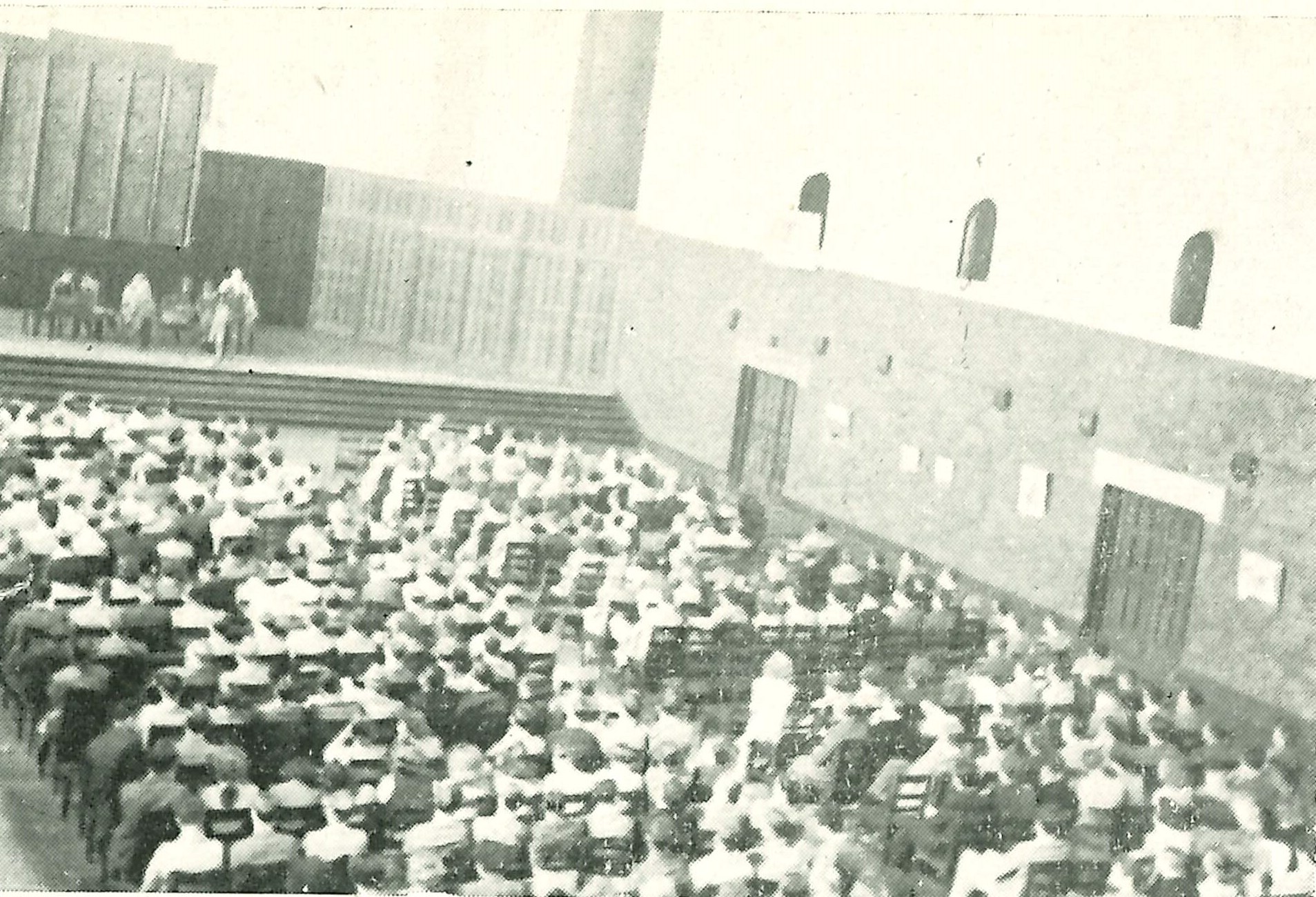By Jack Cross
Seventy-five years ago today, the staff and students of UWA were treated to a lecture by the esteemed Monsieur Jean Leps. Leps was an up-and-coming Alsatian-American avant-garde modernist sculptor who had only recently burst onto the fine art scene with the release of his book In My Little Finger by Sprunz and Scribner, a New York publishing house. In a stroke of good fortune, the St George’s College Fine Arts Society had managed to procure his services for a brief lecture in Winthrop Hall.
The lecture had been advertised in the 17 June 1949 issue of The Pelican newspaper, which included details of Leps’s work and career, his recent feature in an American modernist journal, and an example of his recent work:

Over 450 staff and students packed into the Hall to hear Leps speak on “Modern Sculpture: Is It a Hoax?” Many were fans of Leps and had already read his book or had seen him featured in various art magazines, others who fancied themselves critics came ready with interpretations of the sculpture featured above.
The Pelican issue of 1 July 1949 provides numerous quotes from the lecture. Leps told his rapt listeners that:
Any stonemason can create a factory chimney – it is a simple thing – but to create a complex unity like a work of abstract modern sculpture – that takes something more. Do you think that anyone can create a work of Art? No, there is concentrated and sensitive thinking behind such a creation. […] And you ask me – is modern sculpture a hoax? You have already answered that question yourself.
Despite being ten minutes late, and speaking for only fifteen minutes, Leps still received wild applause and was harangued by autograph hunters and admirers as he was whisked away to a waiting taxi.

Of course, M. Leps did not exist. Nor did his book, his publisher, or any of the authorities that supposedly discussed him. The so-called sculpture was the seat of a rowing scull atop a fencepost with a broomstick propped up against it. This did not stop Leps from receiving a warm welcome and effusive praise from the audience, many of whom were understandably embarrassed when it came out that the entire exercise had been a hoax by the residents of St George’s College (who did not have, and have never had, a Fine Arts Society).
Apparently, all seventy-four residents of the College were in on the conspiracy and had been sworn to complete secrecy. A detailed plan had been drawn up to ensure the hoax was perpetrated convincingly, with residents assigned to manage seating and hustle Leps out of the hall and into a taxi as soon as the lecture was complete.
The residents weren’t found out, nor did they ever intend to get away with it. In a coordinated move, the truth was revealed in The Pelican, and the story was picked up by The Mirror and The West Australian (and apparently some other newspapers around the country, although I’ve been unable to find corresponding digital records). According to one of the ringleaders, their motivation had been twofold. Firstly, they felt university life was, on the whole, far too serious and in dire need of some silliness and “sheer nonsense”. Secondly, they wanted to poke fun at the “pseudo-artsy types” around the university.

I now live at St George’s, where the prank remains a piece of College trivia every new resident learns in their first week. When you walk through the original building it’s easy to imagine the residents of 1949 snickering to themselves as they plotted the lecture in the library. On the other hand, it’s much harder to imagine the College’s residents – now up almost fourfold to 270 – managing to keep a plan like this a secret today. The Leps hoax remains undoubtedly the most audacious and successful prank at the university. I’d even go so far as to say it always will be – the ubiquity of smartphones means such a plot would be immediately exposed with a simple Google search.
I also now edit Pelican, a very different publication to what it was when Geoff Bolton edited it in 1949. According to his obituary in Pelican, Bolton, who worked to re-introduce humour and controversy to the struggling newspaper, had been in on the prank the entire time. I don’t see Abbey and I helping hoodwink the university anytime soon, but we’re definitely open to the idea.
Although it will almost certainly never be replicated, the Leps affair does prove some things never change. For one, that university students (and staff) cannot resist the opportunity to pretend we are more knowledgeable and widely read than we actually are. Secondly, that making fun of pretentious arts students has always been, and will always be, extraordinarily entertaining. And thirdly, that we probably shouldn’t take ourselves so seriously all the time.
Leps was rather convincingly played by Tony Dale (pictured in costume above), who was new that year to the College. Sadly, Dale passed away in 2008, but many of his co-conspirators still recall pulling off the hoax. We look forward to featuring one of them in an upcoming issue of Pelican.

